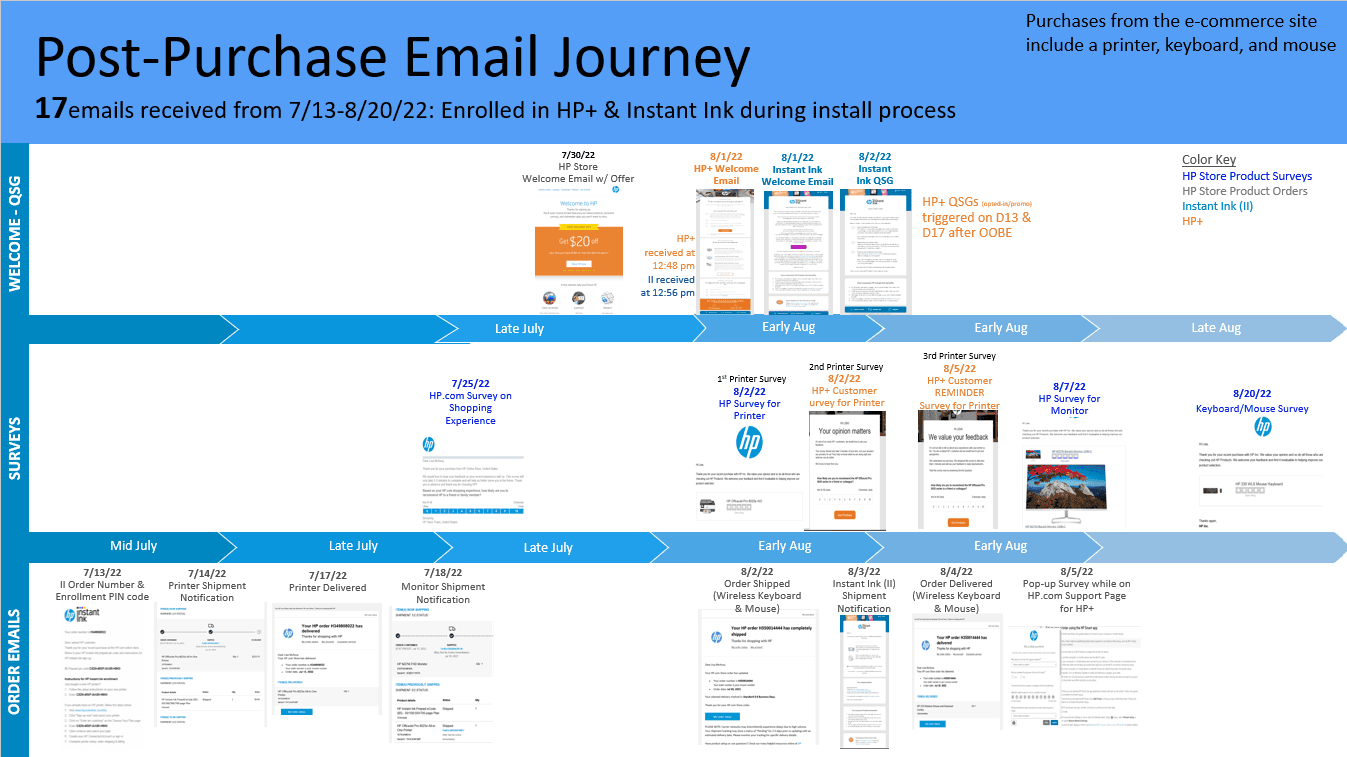Walk In the Customer's Shoes: An Email Journey Evaluation
01 — Experience how the customer sees your marketing
(assumes this is a multi-email campaign)
Why It's Important
One of my top marketing principles is to step back and see what your customers are experiencing.
This can easily be achieved without spending any money, and the simple step will improve your campaigns and avoid communication gaps.
It provides the context you need to evaluate your marketing properly.
02 — Create a visual representation as a picture is worth 1,000 words
Examples of How & When To Do This
For Creative Reviews
Present the creative in context - During the review process, show the creative as the customer would see it. Does the email subject line stand out in a crowded inbox? Consider that a customer may only look at it for 2-5 seconds and decide if they want to open it. This also helps alleviate reviewers wishing to add more elements to the creative.
For Each Email Campaign (e.g., A post-purchase journey)
Map it out - In a slide, chart the customer journey and include the purpose of the email, key messages, a thumbnail of the creative, the email type (promotional or transactional), the audience counts, the launch date, why they are receiving it, the trigger, A/B test variations, and the desired action you want them to take.
Evaluate the Entire Email Journey (all emails you're sending)
Do a 'Walk the Wall' exercise - Take all of your creative and sequentially lay it out according to the marketing funnel. Include any relevant campaign information such as the target audience, key message, journey stage, etc. It includes everything from Acquisition to Post-Purchase to Retention to Loyalty.
03 — Evaluate to determine if action is needed
Questions to Ask During the Evaluation
Are the emails clearly communicating the messaging priorities from your creative brief?
Is your messaging and branding consistent?
Does the flow make sense if they received an email before this or when going to a landing page?
Is it clear what you want the customer to do?
Is anything missing?
What is the A/B testing plan?
How does the creative look in comparison to other marketing tactics?
Do the emails incorporate best practices and learnings from past emails?
After the evaluation, you should have a good idea of what could be stronger, what is unnecessary, or what changes you need to make before your launch date.
How I Applied This Principle
After I started a new job at a company that sells laptops, printers, and accessories, I had to order a new printer, keyboard, and mouse from the company's e-commerce site.
I saved each email I received as I planned to map out my journey. It was a quick way to imagine myself as a typical customer and familiarize myself with the emails they send throughout the company.
I mapped out my customer journey and included what other emails were competing for my attention in my inbox. I received a lot of emails in a very short time period, which was too much too soon, and I was confused by some of them. They were a combination of post-purchase updates, surveys, and cross-sell emails.
As a new employee, I did not want to come in and immediately point out what was not working well. I banked on letting the visuals do the talking.
I shared it with my manager and said it was my post-purchase journey. Without saying anything more, they immediately exclaimed, "Oh wow, that is a lot...a lot of emails!"
04 — Outcome & Actions
Outcome: Mapping my customer journey ignited action to reduce the number of emails the company sent to the customer.
Actions
The journey slide was shared with multiple stakeholders, as it quickly explained the situation and showed it from the customer's point of view. Addressing it was made a high priority to prevent a subpar customer experience.
It encouraged more cross-functional collaboration so different departments were aware of what was being sent.
It allows for a streamlined experience, better timing of email sends, and a less fragmented feel.
